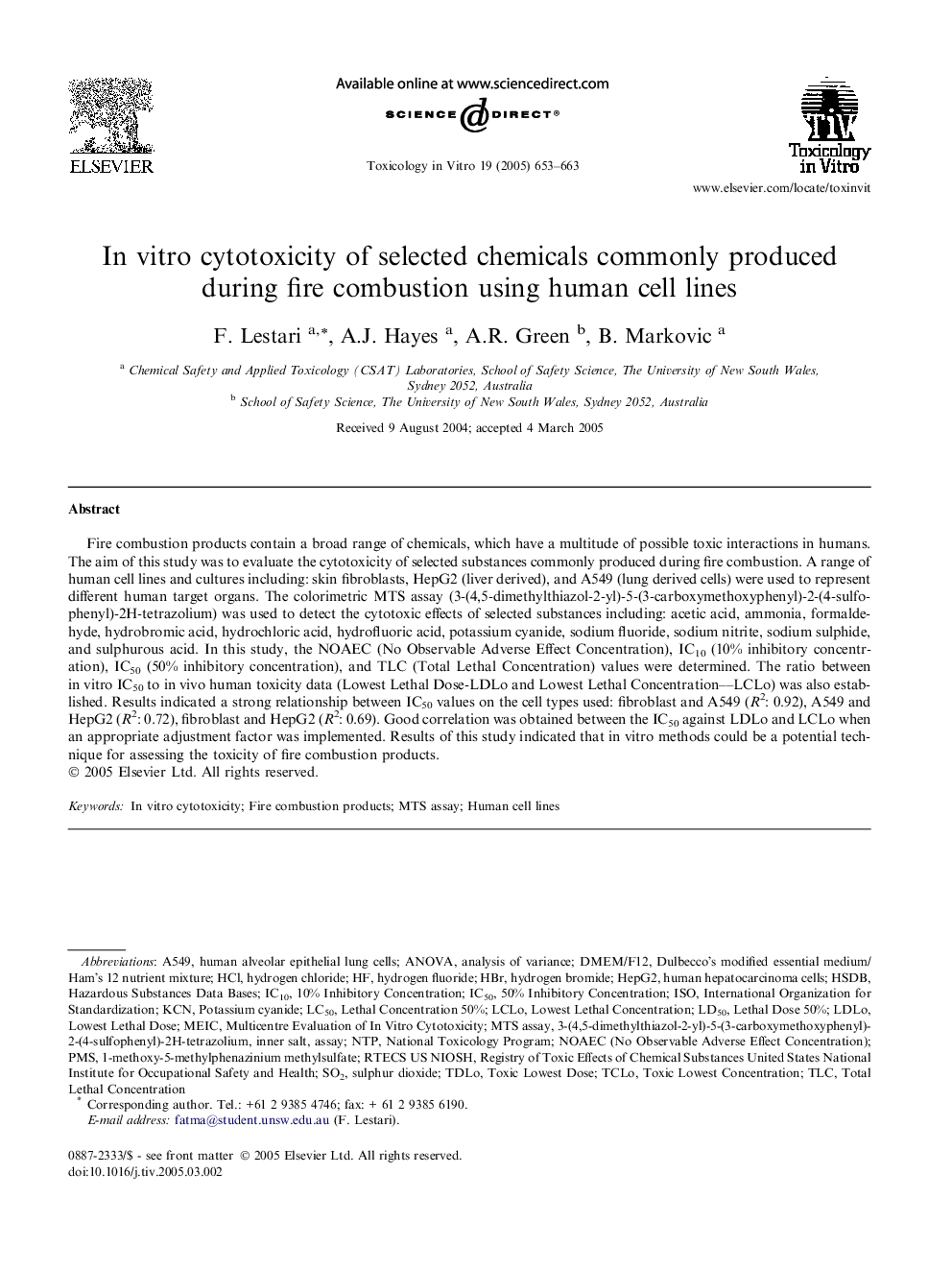| Article ID | Journal | Published Year | Pages | File Type |
|---|---|---|---|---|
| 9038428 | Toxicology in Vitro | 2005 | 11 Pages |
Abstract
Fire combustion products contain a broad range of chemicals, which have a multitude of possible toxic interactions in humans. The aim of this study was to evaluate the cytotoxicity of selected substances commonly produced during fire combustion. A range of human cell lines and cultures including: skin fibroblasts, HepG2 (liver derived), and A549 (lung derived cells) were used to represent different human target organs. The colorimetric MTS assay (3-(4,5-dimethylthiazol-2-yl)-5-(3-carboxymethoxyphenyl)-2-(4-sulfophenyl)-2H-tetrazolium) was used to detect the cytotoxic effects of selected substances including: acetic acid, ammonia, formaldehyde, hydrobromic acid, hydrochloric acid, hydrofluoric acid, potassium cyanide, sodium fluoride, sodium nitrite, sodium sulphide, and sulphurous acid. In this study, the NOAEC (No Observable Adverse Effect Concentration), IC10 (10% inhibitory concentration), IC50 (50% inhibitory concentration), and TLC (Total Lethal Concentration) values were determined. The ratio between in vitro IC50 to in vivo human toxicity data (Lowest Lethal Dose-LDLo and Lowest Lethal Concentration--LCLo) was also established. Results indicated a strong relationship between IC50 values on the cell types used: fibroblast and A549 (R2: 0.92), A549 and HepG2 (R2: 0.72), fibroblast and HepG2 (R2: 0.69). Good correlation was obtained between the IC50 against LDLo and LCLo when an appropriate adjustment factor was implemented. Results of this study indicated that in vitro methods could be a potential technique for assessing the toxicity of fire combustion products.
Keywords
HSDBHbRLC50TLCIC50A549PMSMEICNTPLD50HClHepG2IC1050% inhibitory concentrationDMEM/F12KCNMulticentre Evaluation of In Vitro CytotoxicityISONational Toxicology Programanalysis of varianceANOVAMTS assayHuman cell lineslethal dose 50%Sulphur dioxideSO2International Organization for StandardizationIn vitro cytotoxicitylethal concentration 50%Hydrogen fluorideHydrogen bromidepotassium cyanideHydrogen chloride
Related Topics
Life Sciences
Environmental Science
Health, Toxicology and Mutagenesis
Authors
F. Lestari, A.J. Hayes, A.R. Green, B. Markovic,
